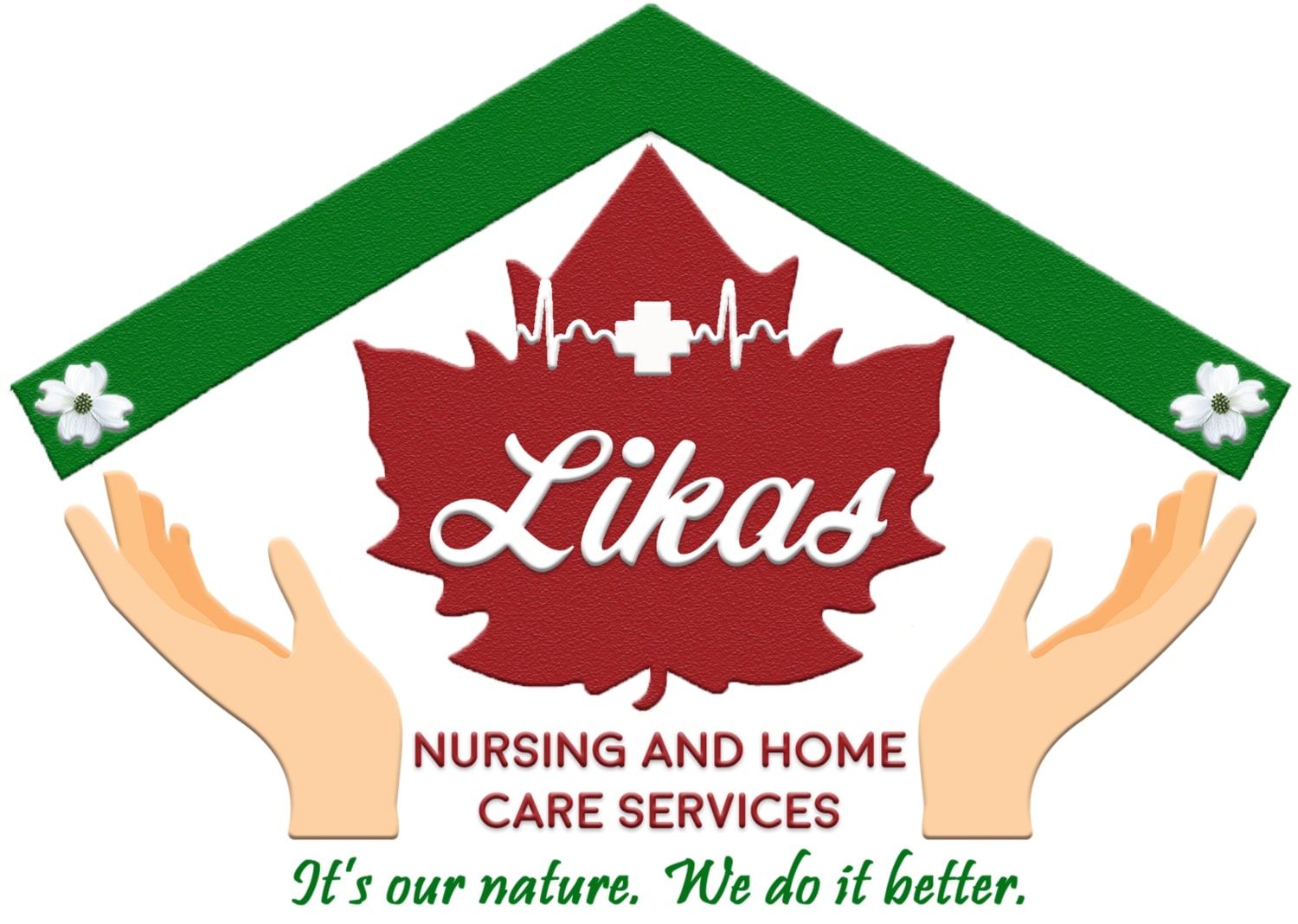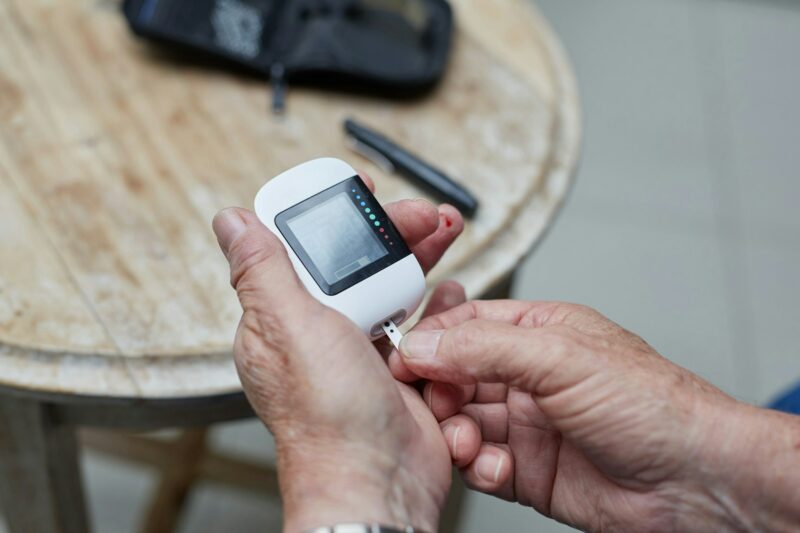
High cholesterol in the elderly is a pressing health concern. While many believe it’s just part of aging, various factors contribute to this issue. Poor diet, lack of exercise, and genetics play significant roles. Understanding what causes high cholesterol can empower seniors to take control of their health.
Unlike younger individuals, older adults often face unique challenges that affect their cholesterol levels. Medications and underlying health conditions can complicate matters further. By recognizing these factors, seniors can make informed choices about their lifestyle and diet. This post will explore the main causes of high cholesterol in the elderly and provide actionable tips to manage it effectively.
Understanding Cholesterol in Elderly
Cholesterol Defined
Cholesterol is a waxy substance found in the body. It plays a crucial role in building cells and producing hormones. The liver produces most of the cholesterol needed. Some cholesterol comes from food sources, such as meat and dairy.
Older adults require cholesterol for various bodily functions. It helps with digestion and vitamin D synthesis. However, too much cholesterol can lead to health problems.
Changes with Age
As people age, cholesterol levels often change. Many older adults experience higher levels of low-density lipoprotein (LDL) cholesterol. This type is often referred to as “bad” cholesterol. It can build up in blood vessels, leading to blockages.
In contrast, high-density lipoprotein (HDL) cholesterol is known as “good” cholesterol. It helps remove LDL cholesterol from the bloodstream. Aging can affect the balance between these two types of cholesterol.
Research shows that about 50% of adults over 65 have high cholesterol levels. This increase is linked to lifestyle changes and metabolic processes that slow down with age.
Health Implications
High cholesterol poses significant risks for older adults. Elevated LDL levels can lead to cardiovascular diseases, including heart attacks and strokes. The risk increases when combined with other factors like high blood pressure or diabetes.
Heart disease remains a leading cause of death among the elderly population. According to the Centers for Disease Control and Prevention (CDC), nearly 697,000 Americans died from heart disease in 2020 alone. Managing cholesterol levels is vital for reducing these risks.
Lifestyle choices greatly impact cholesterol levels in older adults. A diet high in saturated fats can raise LDL cholesterol. Foods such as fried items and processed meats are common culprits. Regular exercise can help increase HDL levels while lowering LDL.
Medications may also play a role in managing high cholesterol. Statins are commonly prescribed to lower LDL levels effectively. These medications help reduce the risk of heart-related issues.
Common Causes of High Cholesterol
Genetic Factors
Genetics play a significant role in high cholesterol levels among the elderly. Familial hypercholesterolemia is a genetic disorder that causes very high LDL cholesterol. It can lead to heart disease at an early age. Individuals with this condition have a mutation that affects how their body processes cholesterol. This results in excess cholesterol in the bloodstream.
Many people do not realize they have this genetic condition until later in life. Regular testing for cholesterol levels can help identify those at risk. If one family member has high cholesterol, others may too. Understanding family history is crucial for managing cholesterol effectively.
Hormonal Changes
Aging also brings hormonal changes that affect cholesterol levels. As people grow older, hormone production decreases. This change can lead to higher unhealthy cholesterol levels. For example, menopause in women often correlates with increased LDL cholesterol and decreased HDL cholesterol.
Hormones like estrogen help regulate cholesterol levels. When estrogen drops, the balance shifts towards higher bad cholesterol. This shift increases the risk of heart disease and hardened cholesterol deposits in arteries. Monitoring these changes is essential for maintaining heart health in older adults.
Medication Side Effects
Many elderly individuals take medications for various health issues. Some of these medications can raise high plasma cholesterol levels as a side effect. Common drugs include diuretics and beta-blockers. These medications often treat conditions like high blood pressure but can lead to elevated cholesterol numbers.
Patients should discuss their medications with healthcare providers regularly. Adjusting doses or switching drugs might be necessary to manage cholesterol better. It’s important to weigh the benefits of medication against potential risks for high cholesterol.
Lifestyle Factors
Lifestyle choices also contribute to high cholesterol in older adults. Diet plays a key role here. Consuming saturated fats and trans fats can raise bad cholesterol levels significantly. Foods like red meat, full-fat dairy products, and processed snacks are common culprits.
Physical inactivity compounds the problem by contributing to weight gain and obesity. Being overweight can lead to higher bad cholesterol and lower good cholesterol levels. Encouraging regular exercise is vital for maintaining healthy cholesterol numbers.
Lifestyle Factors Impacting Cholesterol
Physical Inactivity
Physical inactivity is a major contributor to high cholesterol levels in older adults. Regular exercise helps the body manage cholesterol. It raises good HDL cholesterol and lowers bad LDL cholesterol. Older adults often become less active due to mobility issues or lack of motivation. This decrease in physical activity can lead to weight gain and higher cholesterol levels.
Studies show that sedentary lifestyles increase cardiovascular risk factors. For example, a 2019 study found that older adults who engage in at least 150 minutes of moderate exercise weekly have better cholesterol profiles. They also have a lower risk of heart disease. Simple activities like walking or gardening can make a difference.
Smoking Effects
Smoking has harmful effects on cholesterol and overall heart health. It lowers good HDL cholesterol while raising bad LDL cholesterol and triglycerides. This imbalance increases the risk of heart disease significantly.
Older adults who smoke face even greater risks. According to the American Heart Association, smokers are twice as likely to develop heart disease compared to non-smokers. Quitting smoking can improve cholesterol levels over time. Many older adults may struggle with quitting, but support programs can help.
Stress and Mental Health
Stress and mental health play significant roles in managing cholesterol levels. Chronic stress can lead to unhealthy eating habits and reduced physical activity. Many people turn to comfort foods high in saturated fats and sugars during stressful times. These choices contribute to increased cholesterol content in the body.
Mental health conditions like depression can affect motivation for exercise and healthy eating. A study from 2020 found that seniors with depression had higher levels of bad cholesterol. Addressing mental health through therapy or support groups can lead to better lifestyle choices.
Nutrition Choices
Diet is another critical factor impacting cholesterol levels in the elderly. Consuming foods high in saturated fats raises cholesterol particles and contributes to heart disease risk factors. Foods such as red meat, full-fat dairy products, and fried foods should be limited.
Instead, a diet rich in fruits, vegetables, whole grains, and healthy fats can improve cholesterol management. Omega-3 fatty acids found in fish are particularly beneficial for heart health.
Chronic Conditions Affecting Levels
Diabetes
Diabetes significantly affects cholesterol levels in older adults. High blood sugar can lead to high cholesterol. Insulin resistance is common in elderly diabetics. This condition makes it harder for the body to manage fats. As a result, unhealthy cholesterol levels may rise.
Older adults with diabetes often have other health issues. These include obesity and high blood pressure. Both conditions can worsen cholesterol problems. Studies show that managing blood sugar helps control cholesterol. Regular check-ups are essential for older adults to monitor these levels.
High Blood Pressure
High blood pressure is another concern for the elderly. It can contribute to rising cholesterol levels. The heart works harder when blood pressure is high. This strain can lead to damage in blood vessels. Over time, this damage increases the risk of plaque buildup.
Plaque consists of cholesterol and other substances. When plaque builds up, arteries narrow. This process can cause heart disease and strokes. Managing blood pressure through diet and medication is crucial. Many doctors recommend lifestyle changes to help control both conditions.
Kidney Disease
Kidney disease also plays a role in cholesterol metabolism among older individuals. The kidneys help filter waste from the blood. When they do not function well, waste accumulates. This buildup can negatively impact cholesterol levels.
Patients with kidney disease often experience higher levels of LDL cholesterol, known as “bad” cholesterol. This increase occurs because the body struggles to eliminate excess fats properly. Furthermore, kidney disease can raise triglycerides, another type of fat in the blood.
Older adults with chronic kidney disease should receive regular assessments of their cholesterol levels. Healthcare providers may suggest dietary changes or medications to help manage these levels effectively.
Diet and Nutrition Influence
Dietary Choices
Certain dietary choices can significantly raise cholesterol levels in the elderly. Foods high in saturated fats, like red meat and full-fat dairy products, contribute to increased LDL cholesterol. Processed foods often contain trans fats, which are particularly harmful. These fats are found in many fried and baked goods.
A diet rich in sugars also poses a risk. Sugary snacks and beverages can lead to weight gain, which is linked to higher cholesterol levels. The combination of these factors can make managing cholesterol more difficult as one ages.
Importance of Fiber
Fiber-rich foods play an essential role in managing cholesterol levels. They help reduce the absorption of cholesterol in the bloodstream. Whole grains, fruits, vegetables, and legumes are excellent sources of fiber.
For instance, oats contain soluble fiber called beta-glucan. This type of fiber has been shown to lower LDL cholesterol effectively. Eating a variety of fiber-rich foods can improve overall heart health. It also helps maintain a healthy weight, which is crucial for elderly individuals.
Healthy Fats
Healthy fats impact cholesterol balance positively. Unsaturated fats, found in olive oil, avocados, and nuts, can help lower bad cholesterol while raising good cholesterol (HDL). Including these fats in meals is beneficial for heart health.
Omega-3 fatty acids are another important component. These healthy fats are present in fatty fish like salmon and mackerel. Studies show that omega-3s can reduce triglycerides and improve overall lipid profiles.
Elderly individuals should focus on incorporating these healthy fats into their diets while limiting unhealthy fats. This change can significantly affect their cholesterol levels.
Family Factors
Family history also plays a crucial role in determining cholesterol levels. Genetics can influence how the body processes fat and cholesterol. If high cholesterol runs in the family, it may be necessary to take extra care with dietary choices.
Regular check-ups with healthcare providers are vital for monitoring cholesterol levels, especially in elderly individuals with a family history of heart disease.
Importance of Regular Check-ups
Health Monitoring
Routine cholesterol screenings are crucial for older adults. These check-ups help determine cholesterol levels and assess overall heart health. High cholesterol can lead to serious conditions like heart disease and stroke. Regular monitoring allows healthcare providers to catch issues early.
Older adults often face multiple health challenges. Conditions like diabetes and hypertension can complicate cholesterol management. Regular check-ups help track these related health problems. They provide a clearer picture of an individual’s health status.
Risk Awareness
Healthcare providers play a vital role in educating patients about cholesterol risks. They inform patients about how high cholesterol can affect their bodies. Knowledge empowers older adults to make better lifestyle choices.
Research shows that many elderly individuals underestimate their risk for high cholesterol. This lack of awareness can lead to poor health outcomes. Regular consultations help highlight individual risk factors, such as family history or lifestyle habits.
Benefits of Education
Education during check-ups is essential for effective cholesterol management. Healthcare providers can explain the importance of a balanced diet and regular exercise. They can suggest dietary changes that may lower cholesterol levels.
Patients learn about the benefits of foods rich in omega-3 fatty acids, like fish and nuts. They also discover how fiber-rich foods, such as fruits and vegetables, can improve their health. Understanding these concepts leads to healthier eating patterns.
Collaborative Care
Regular check-ups encourage collaboration between patients and healthcare providers. This partnership fosters open communication about treatment plans. Patients feel more comfortable discussing concerns regarding their cholesterol levels.
Healthcare professionals can recommend medications if lifestyle changes are insufficient. This tailored approach ensures that each patient receives appropriate care based on their unique needs.
Routine Testing
The American Heart Association recommends that adults over 20 have their cholesterol checked every four to six years. However, older adults may need more frequent testing due to age-related risks.
Testing frequency should be adjusted based on individual health factors. Those with a history of high cholesterol or cardiovascular issues may require annual screenings.
Managing and Lowering Cholesterol
Lifestyle Changes
Healthy lifestyle changes can significantly lower cholesterol levels. Diet plays a crucial role in managing blood cholesterol. Eating more fruits, vegetables, and whole grains helps reduce harmful LDL cholesterol. Foods rich in omega-3 fatty acids, like fish and nuts, also support good HDL cholesterol levels.
Regular physical activity is essential. Engaging in aerobic exercises for at least 150 minutes weekly can improve HDL cholesterol. Activities like walking, swimming, or cycling are effective. Reducing saturated fats and trans fats in the diet further aids in lowering cholesterol.
Maintaining a healthy weight is important too. Excess weight can lead to higher LDL cholesterol levels. Losing even a small amount of weight can have a positive impact on overall cholesterol levels.
Medication Adherence
Following prescribed medications is vital for managing cholesterol effectively. Statins are commonly used to lower LDL cholesterol and raise HDL cholesterol. These medications help reduce the risk of heart disease.
Patients should understand their treatment plans clearly. Regular follow-ups with healthcare providers ensure that the medications work as intended. Adjustments may be necessary based on individual responses to treatment.
Skipping doses can lead to increased cholesterol levels. This increases the risk of cardiovascular issues. Therefore, adhering to medication schedules is critical for maintaining ideal cholesterol levels.
Support Systems
Support systems play a significant role in managing cholesterol levels. Family members can encourage healthy eating habits and physical activities. Their involvement can motivate elderly individuals to stick to lifestyle changes.
Community resources also provide valuable assistance. Local health programs often offer free cholesterol screenings. These screenings help monitor blood cholesterol regularly.
Support groups can share experiences and strategies for managing high cholesterol. They create an environment where individuals feel understood and motivated.
Healthcare professionals can connect patients with nutritionists or dietitians for personalized advice. This tailored guidance supports better dietary choices.
Personalized Treatment Options
Individualized Plans
Clinicians must create individualized treatment plans for each patient. Every elderly person has a unique health profile. Factors such as age, weight, and existing health conditions play a significant role. For example, some patients may have diabetes or hypertension alongside high cholesterol. These conditions can impact how they respond to certain medications.
Personalized plans help prioritize the most effective treatments. They consider both the patient’s medical history and lifestyle choices. This approach ensures that the chosen medication fits well with their overall health strategy.
Drug Interactions
Drug interactions are crucial when prescribing cholesterol medications. Many elderly patients take multiple drugs for various conditions. This increases the risk of adverse effects when new medications are introduced. For instance, statins, a common class of cholesterol-lowering drugs, can interact with blood thinners. Such interactions can lead to serious complications.
Healthcare providers must review all medications before starting new treatments. This process helps avoid potential risks and enhances patient safety. Regular assessments ensure that any changes in the patient’s health are addressed promptly.
Communication is Key
Ongoing communication is vital in managing cholesterol levels. Patients should discuss their concerns and experiences with healthcare providers openly. Families also play an essential role in this dialogue. They can provide support and share observations about the patient’s health.
Regular check-ins allow clinicians to adjust treatment plans as needed. These discussions help identify side effects, monitor progress, and make necessary changes to medications or lifestyle recommendations.
Informed Decision-Making
Patients should be involved in their treatment decisions. Educating them about their condition and available options fosters better outcomes. When patients understand their treatment plan, they are more likely to adhere to it.
Clinicians should provide clear explanations about medications, including benefits and potential side effects. This transparency builds trust between patients and healthcare providers.
Monitoring Progress
Monitoring cholesterol levels is essential for evaluating treatment effectiveness. Regular blood tests help track changes in lipid profiles over time. Adjustments to medication may be necessary based on these results.
Patients should maintain a record of their test results and share them during appointments. This information aids clinicians in making informed decisions about ongoing treatment strategies.
Summary
High cholesterol in the elderly is a significant health concern. Understanding the various factors that contribute to elevated cholesterol levels can empower you to take control of your health. From lifestyle choices to chronic conditions, every aspect plays a role. Regular check-ups and personalized treatment options are crucial for effective management.
You have the tools to lower cholesterol and improve your overall well-being. Focus on a balanced diet, stay active, and consult healthcare professionals for tailored advice. Don’t wait—start making changes today for a healthier tomorrow. Your heart will thank you!
Frequently Asked Questions
What is cholesterol, and why is it important for the elderly?
Cholesterol is a fatty substance essential for building cells and hormones. In the elderly, maintaining balanced cholesterol levels is crucial to reduce the risk of heart disease and stroke.
What are common causes of high cholesterol in older adults?
High cholesterol in older adults can result from genetics, poor diet, lack of exercise, and certain medications. Understanding these factors helps in managing cholesterol effectively.
How do lifestyle factors impact cholesterol levels?
Lifestyle choices like diet, physical activity, and smoking significantly influence cholesterol levels. A healthy lifestyle can help lower bad cholesterol (LDL) and raise good cholesterol (HDL).
Which chronic conditions contribute to high cholesterol?
Conditions such as diabetes, hypothyroidism, and kidney disease can lead to elevated cholesterol levels. Managing these conditions is vital for overall health.
How does diet affect cholesterol in the elderly?
A diet high in saturated fats, trans fats, and sugars can raise bad cholesterol levels. Incorporating more fruits, vegetables, whole grains, and healthy fats can improve cholesterol profiles.
Why are regular check-ups important for managing cholesterol?
Regular check-ups help monitor cholesterol levels and assess overall heart health. Early detection of high cholesterol allows for timely intervention and better management strategies.
What are some personalized treatment options for high cholesterol?
Personalized treatment may include lifestyle changes, medication, or dietary adjustments tailored to individual needs. Consulting a healthcare provider ensures the best approach for managing cholesterol effectively.




